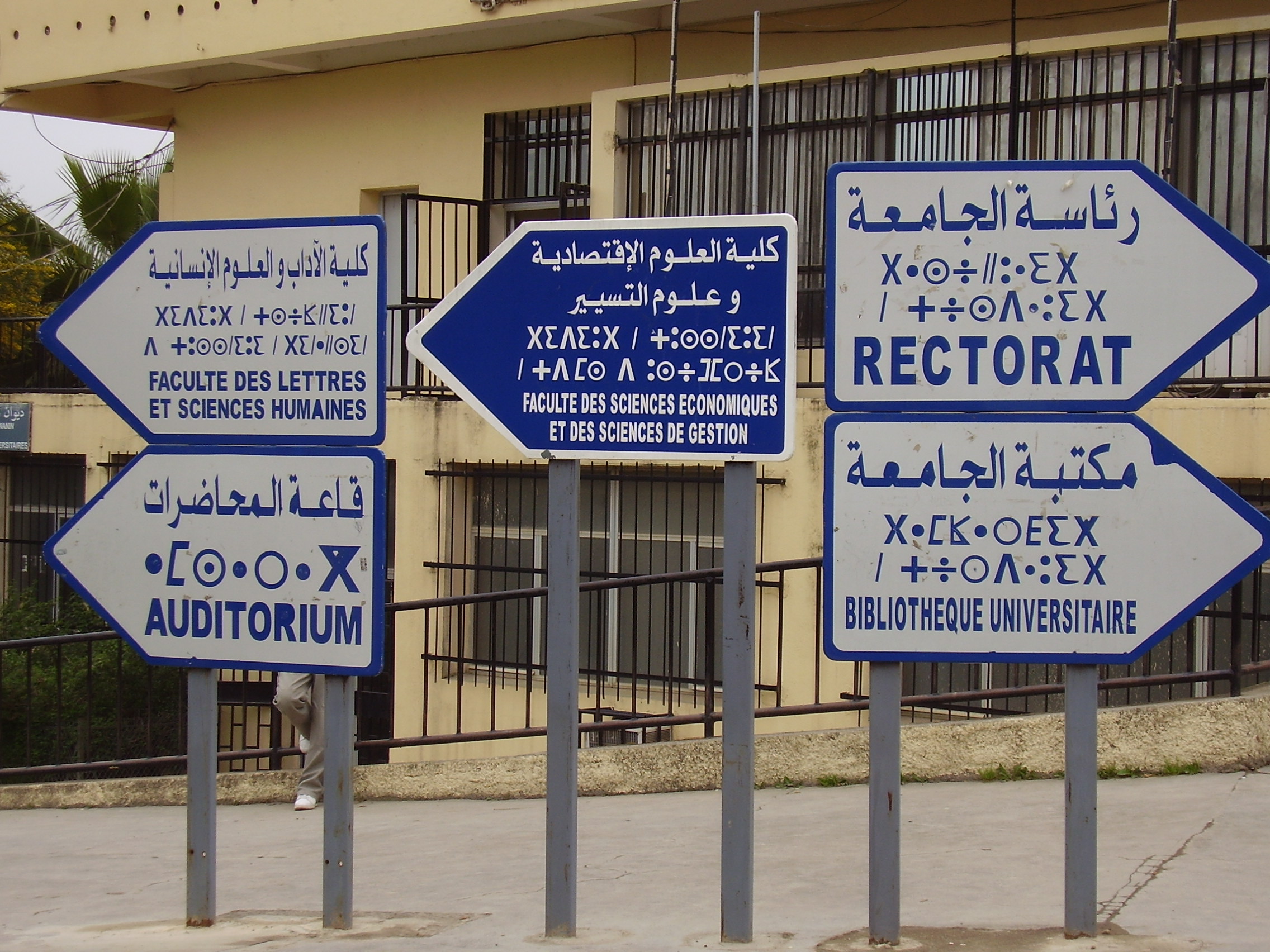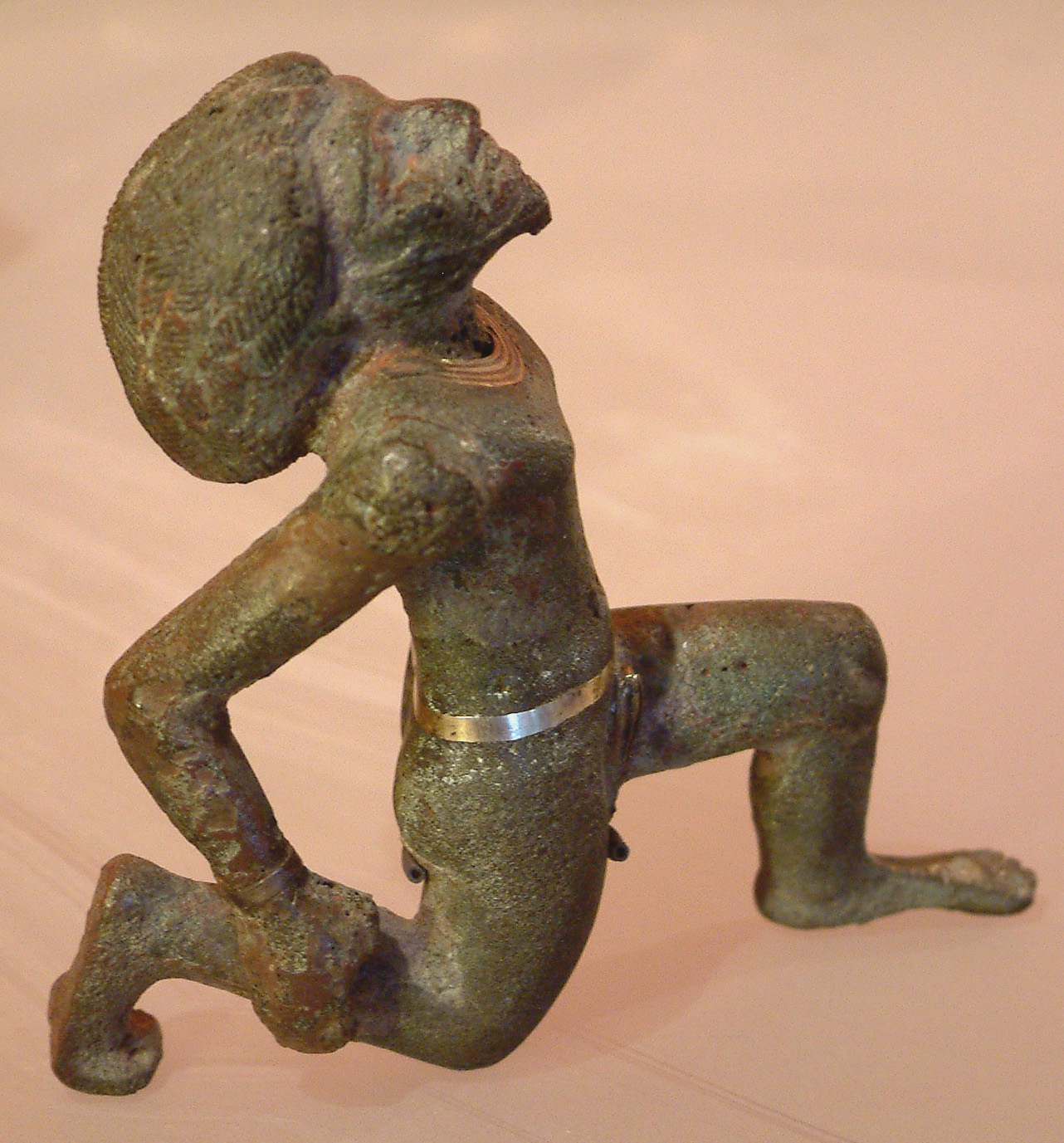|
Tamahaq
Tamahaq (''Tahaggart Tamahaq'', ''Tamahaq Tahaggart'') is the only known Northern Tuareg language, spoken in Algeria, western Libya and northern Niger. It varies little from the Southern Tuareg languages of the Aïr Mountains, Azawagh and Adagh. The differences mostly consist of sound substitutions, such as ''Tamahaq'' instead of ''Tamajaq'' or ''Tamasheq''. Varieties There are three main varieties of Tamahaq: *''Tahaggart'', spoken around the Ahaggar Mountains in southern Algeria by the Kel Ahaggar confederation *''Ajjer'', spoken by the Kel Ajjer confederation *''Ghat'', spoken around Djanet in southeast Algeria and Ghat Ghat, a term used in the Indian subcontinent, depending on the context could refer either to a range of stepped hills with valleys (ghati in Hindi), such as the Eastern Ghats and Western Ghats; or the series of steps leading down to a body of ... in Libya. According to Blench (2006), Tahaggart and Ghat are distinct Tuareg languages. References ... [...More Info...] [...Related Items...] OR: [Wikipedia] [Google] [Baidu] |
Tuareg Languages
The Tuareg () languages constitute a group of closely related Berber languages and dialects. They are spoken by the Tuareg Berbers in large parts of Mali, Niger, Algeria, Libya and Burkina Faso, with a few speakers, the ''Kinnin'', in Chad. Description Tuareg dialects belong to the South Berber group and are sometimes regarded as a single language (as for instance by Karl-Gottfried Prasse). They are distinguished mainly by a few sound shifts (notably affecting the pronunciation of original ''z'' and ''h''). The Tuareg varieties are unusually conservative in some respects; they retain two short vowels where Northern-Berber languages have one or none, and have a much lower proportion of Arabic loanwords than most Berber languages. The Tuareg languages are traditionally written in the indigenous Tifinagh alphabet. However, the Arabic script is commonly used in some areas (and has been since medieval times), while the Latin script is official in Mali and Niger. Subclassification *No ... [...More Info...] [...Related Items...] OR: [Wikipedia] [Google] [Baidu] |
Berber Languages
The Berber languages, also known as the Amazigh languages or Tamazight,, ber, label=Tuareg Tifinagh, ⵜⵎⵣⵗⵜ, ) are a branch of the Afroasiatic language family. They comprise a group of closely related languages spoken by Berber communities, who are indigenous to North Africa.Hayward, Richard J., chapter ''Afroasiatic'' in Heine, Bernd & Nurse, Derek, editors, ''African Languages: An Introduction'' Cambridge 2000. . The languages were traditionally written with the ancient Libyco-Berber script, which now exists in the form of Tifinagh. Today, they may also be written in the Berber Latin alphabet or the Arabic script, with Latin being the most pervasive. Berber languages are spoken by large populations of Morocco, Algeria and Libya, by smaller populations of Tunisia, northern Mali, western and northern Niger, northern Burkina Faso and Mauritania and in the Siwa Oasis of Egypt. Large Berber-speaking migrant communities, today numbering about 4 million, have been livin ... [...More Info...] [...Related Items...] OR: [Wikipedia] [Google] [Baidu] |
Languages Of Libya
The official language of Libya is Modern Standard Arabic. Most residents speak one of the varieties of Arabic as a first language, most prominently Libyan Arabic, but also Egyptian Arabic and Tunisian Arabic. Major language Arabic The official language of Libya is Arabic. The local Libyan Arabic variety is the common spoken vernacular. Minority languages Berber Various Berber languages are also spoken, including Tamasheq, Ghadamès, NafusiSuknahand Awjilah. Both Berber and Arabic languages belong to the wider Afroasiatic (Hamito-Semitic) family. The most significant berber speaking group, the Nafusi, is concentrated in the Tripolitanian region. Berber languages are also spoken in some oases, including GhadamèsAwjilah Sawknah. Tamahaq is spoken by the Tuareg. Libya's former Head of State Muammar Gaddafi denied the existence of Berbers as a separate ethnicity, and called Berbers a "product of colonialism" created by the West to divide Libya. The Berber language was not recog ... [...More Info...] [...Related Items...] OR: [Wikipedia] [Google] [Baidu] |
Kel Ajjer
Kel Ajjer (also Kel Azjar, Kel Azjer) is a Tuareg confederation inhabiting western Libya and eastern Algeria. Their main stronghold was Ghat, followed by Ubari. The Kel Ajjer speak Tamahaq, or Northern Tuareg. See also *Azjar **Kel Adagh **Kel Ahaggar **Kel Ayr **Kel Gres **Aulliminden The Iwellemmedan (''Iwəlləmədǎn''), also spelled Iullemmeden, Aulliminden, Ouilliminden, Lullemmeden, and Iwellemmeden, are one of the seven major Tuareg tribal or clan confederations (called "''Drum groups''"). Their communities are histori ...: Kel Ataram (west) and Kel Dinnik (east) References Maghreb Sahara Society of Algeria Society of Libya Tuareg confederations {{Africa-ethno-group-stub ... [...More Info...] [...Related Items...] OR: [Wikipedia] [Google] [Baidu] |
Languages Of Algeria
The official languages of Algeria are Arabic and Tamazight (Berber), as specified in its constitution since 1963 for the former and since 2016 for the latter. Berber has been recognized as a "national language" by constitutional amendment since 8 May 2002. In February, 2016, a constitutional resolution was passed making Berber an official language alongside Arabic. Algerian Arabic and Berber are the native languages of over 99% of Algerians, with Algerian Arabic spoken by about 90% and Berber by 10%."Aujourd'hui, la majorité des Algériens sont arabophones dans une proportion de 72 %. Parmi les Arabophones, c'est l'arabe algérien qui dominent nettement avec 60 % de la population totale et 83,2 % des arabophones. Les autres arabophones parlent le hassaniyya (11,3 %), l'arabe marocain (0,4 %), l'arabe du Sahara (0,1 %), l'arabe égyptien, voire l'arabe irakien. Toutes les variétés d'arabe appartiennent au groupe sémitique de la famille chamito-sémitique. Mais tous les arabop ... [...More Info...] [...Related Items...] OR: [Wikipedia] [Google] [Baidu] |
Kel Ahaggar
Kel Ahaggar ( Berber: ⴾⵍ ⵂⴴⵔ) (trans: "People of Ahaggar") is a Tuareg confederation inhabiting the Hoggar Mountains (Ahaggar mountains) in Algeria. The confederation is believed to have been founded by the Tuareg matriarch Tin Hinan, whose monumental tomb is located at Abalessa. The official establishment is dated to around 1750. It has been largely defunct since 1977, when it was terminated by the Algerian government. The language of the confederation is '' Tahaggart'', a dialect of Tamahaq. Tribes The Kel Ahaggar confederation is made up of a number of tribes, including: *Aït Loaien *Dag Rali (also spelled Dag Ghâli) *Iregenaten *Kel Rela, the ruling tribe. *Kel Silet *Taituq *Tégéhé Millet Popular culture *A novel about the 1881 attempt by the French government to drive a railroad through the heart of the Sahara, including the Ahaggar region. The expedition, led by Lt. Colonel Paul Flatters, was attacked by the Tuareg of the Kel Ahaggar. *The 1957 film ' ... [...More Info...] [...Related Items...] OR: [Wikipedia] [Google] [Baidu] |
Berbers In Niger
Tuareg in Niger are Niger citizens of Tuareg descent or persons of Tuareg descent residing in Niger. Ethnic Tuareg in Niger are believed to number of 1,620,000 See also *Tuareg The Tuareg people (; also spelled Twareg or Touareg; endonym: ''Imuhaɣ/Imušaɣ/Imašeɣăn/Imajeɣăn'') are a large Berber ethnic group that principally inhabit the Sahara in a vast area stretching from far southwestern Libya to southern Alg ... References Ethnic groups in Niger {{ethno-stub ... [...More Info...] [...Related Items...] OR: [Wikipedia] [Google] [Baidu] |
Berbers In Libya
, image = File:Berber_flag.svg , caption = The Berber ethnic flag , population = 36 million , region1 = Morocco , pop1 = 14 million to 18 million , region2 = Algeria , pop2 = 9 million to ~13 million , region3 = Mauritania , pop3 = 2.9 million , region4 = Niger , pop4 = 2.6 million, Niger: 11% of 23.6 million , region5 = France , pop5 = 2 million , region6 = Mali , pop6 = 850,000 , region7 = Libya , pop7 = 600,000 , region8 = Belgium , pop8 = 500,000 (including descendants) , region9 = Netherlands , pop9 = 467,455 (including descendants) , region10 = Burkina Faso , pop10 = 406,271, Burkina Faso: 1.9% of 21.4 million , region11 = Egypt , pop11 = 23,000 or 1,826,580 , region12 = Tunisia , pop12 ... [...More Info...] [...Related Items...] OR: [Wikipedia] [Google] [Baidu] |
Berbers In Algeria
, image = File:Berber_flag.svg , caption = The Berber ethnic flag , population = 36 million , region1 = Morocco , pop1 = 14 million to 18 million , region2 = Algeria , pop2 = 9 million to ~13 million , region3 = Mauritania , pop3 = 2.9 million , region4 = Niger , pop4 = 2.6 million, Niger: 11% of 23.6 million , region5 = France , pop5 = 2 million , region6 = Mali , pop6 = 850,000 , region7 = Libya , pop7 = 600,000 , region8 = Belgium , pop8 = 500,000 (including descendants) , region9 = Netherlands , pop9 = 467,455 (including descendants) , region10 = Burkina Faso , pop10 = 406,271, Burkina Faso: 1.9% of 21.4 million , region11 = Egypt , pop11 = 23,000 or 1,826,580 , region12 = Tunisia , pop12 ... [...More Info...] [...Related Items...] OR: [Wikipedia] [Google] [Baidu] |
Ghat, Libya
Ghat ( ar, غات) is the capital of the Ghat District in the Fezzan region of southwestern Libya, located just east of the Algerian border. History In historical times, Ghat was an important terminal point on a trans-Saharan trade route and a major administrative center in the Fezzan. It was a stronghold for the Kel Ajjer Tuareg federation whose territory covered most of south-western Libya—including Ubari, Sabha and Ghadames, plus south-eastern Algeria (Djanet and Illizi). From the 5th century BC to the 5th century AD, the Fezzan was home to the Garamantian Empire, a city state which operated the Trans-Saharan trade routes between the Carthaginians—and later the Roman Empire—and the Sahelian states of West and Central Africa. During the 13th and 14th century, portions of the Fezzan were part of the Kanem Empire, while the Ottoman rulers of North Africa asserted their control over the region in the 17th century. Ghat and its inhabitants were described in great ... [...More Info...] [...Related Items...] OR: [Wikipedia] [Google] [Baidu] |
Djanet
Djanet ( ar, جانت) is an oasis city, and capital of Djanet District as well as of Djanet Province, southeast Algeria. It is located south of Illizi. According to the 2008 census it has a population of 14,655, up from 9,699 in 1998, and an annual population growth rate of 4.3%. It is inhabited by the Kel Ajjer Tuareg people. History The region of Djanet has been inhabited since Neolithic times. There were periods of ten thousand years at a time that the area was not desert. The flora and fauna were luxuriant as is seen in the numerous rock paintings of Tassili n'Ajjer around Djanet. Populations of hunter-gatherers lived there. Djanet was founded in the Middle Ages by the Tuareg. The Ottoman Empire, which had a nominal authority over the Fezzan region, reinforced their presence in the area at the beginning of the 20th century in reaction to the colonization of Africa by the Europeans. Geography Djanet, and the nearby towns of Azelouaz, El Mihan, Adjahil and Eferi, lie in ... [...More Info...] [...Related Items...] OR: [Wikipedia] [Google] [Baidu] |
Algeria
) , image_map = Algeria (centered orthographic projection).svg , map_caption = , image_map2 = , capital = Algiers , coordinates = , largest_city = capital , religion = , official_languages = , languages_type = Other languages , languages = Algerian Arabic (Darja) French , ethnic_groups = , demonym = Algerian , government_type = Unitary semi-presidential republic , leader_title1 = President , leader_name1 = Abdelmadjid Tebboune , leader_title2 = Prime Minister , leader_name2 = Aymen Benabderrahmane , leader_title3 = Council President , leader_name3 = Salah Goudjil , leader_title4 = Assembly President , leader_name4 = Ibrahim Boughali , legislature = Parliament , upper_house = Council of the Nation , lower_house ... [...More Info...] [...Related Items...] OR: [Wikipedia] [Google] [Baidu] |





